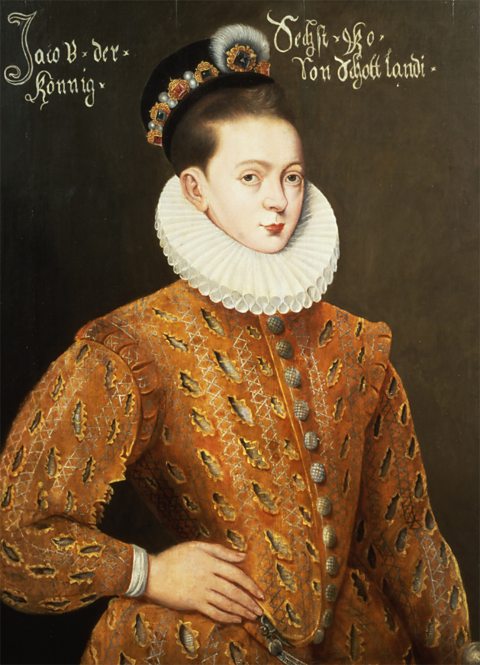James VI takes control
As well as removing the Church from the control of the monarch and secular government, some sought to increase the Church's control over all aspects of the country.
James was criticised by Presbyterians in the early years of his reign as a result of not taking action against Catholic sentiment in Scotland. James also clashed with the Church over his own role in religion. He firmly advocated that he was in sole control of every section of Scottish life, including Church matters.
The Ruthven Raid

James was abducted by Presbyterian nobles in August 1582. William Ruthven and a group known as the 'Lords Enterprisers' seized the 16-year-old king in an attempt to influence and control him. They wished to assert government authority under their terms and banish Catholic and foreign influence from the country.
While holding the king captive, the raiders received limited help from Elizabeth I.
James escaped in June 1583. Under the direction of James Stewart, Earl of Arran, he assumed control. He initially pardoned his captors but following an attempt to overthrow him in 1584, he had Ruthven executed and the other conspirators were exiled.
The Black Acts
To take control back from the Kirk, the so-called ‘Black Acts’ were passed by the government in 1584. These laws limited the authority of the congregation, abolished Presbyteries and established royal supremacy over the Kirk. James was given the power to appoint bishops.
Asserting his power over the Church reflected James' personal beliefs. These were outlined in The Trew Law of Free Monarchies, published in 1598. He believed in the Divine Right of Kings and the importance of their omnipotent (unlimited) power. James felt that, as King, he was answerable only to God. Andrew Melville and his followers disagreed. They saw the monarch as an ordinary member of the Kirk.
The Golden Acts
After their abolition, the influence of the Presbyteries recovered. In 1592, the Golden Acts were passed, giving increased power to the Presbyteries. They were able to form Church Courts, but the Act did not diminish the power of the King. In 1600, after the fall of Andrew Melville, James appointed three bishops. By the end of his reign, James had been able to re-establish an Episcopalian hierarchy in the Church, including archbishops and bishops.
He also had considerable control over the General Assembly, limiting its meetings to once a year.